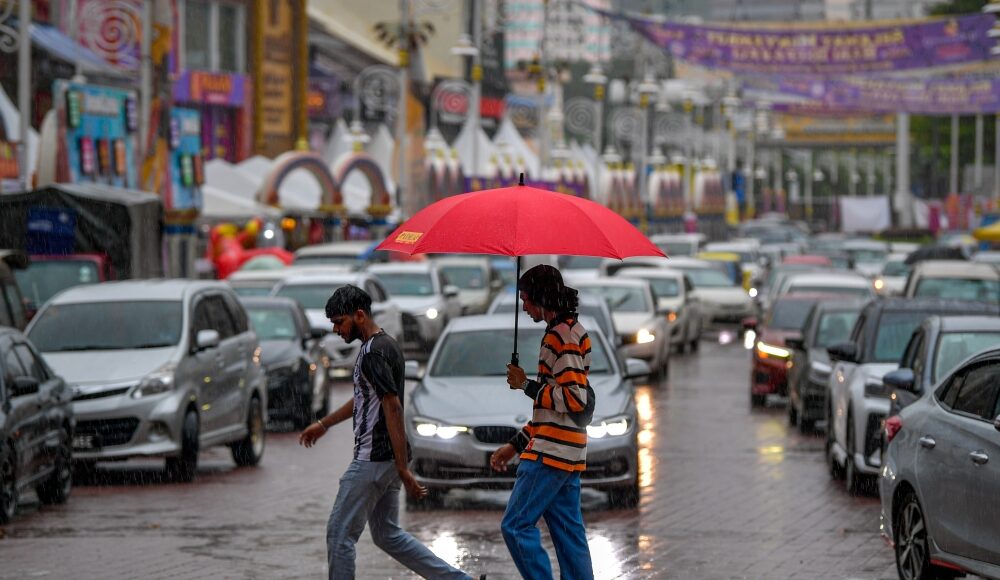MAY 21 — Ten years have quietly passed since the demolition of the historic 100 Quarters in Brickfields, Kuala Lumpur—a pivotal moment that marked the end of the last cluster of landed homes in the area.
Today, while skyscrapers continue to rise and commercial interests dominate, the soul of Brickfields feels increasingly distant, obscured by unfulfilled promises, poor planning, and unchecked gentrification.
The 100 Quarters, built during the British colonial era as government housing for railway workers, stood as more than just a block of homes.
They were a living piece of history—a rare remaining thread that tied present-day Brickfields to its working-class roots.
In late May 2015, the quarters were flattened. In return for the land, the developer was to rejuvenate Brickfields and build a space to commemorate the 100 Quarters with a RM35 million budget allocated for it.
Neither the rejuvenation project nor the promised commemorative space has lived up to expectations.
Instead, what remains is a garish attempt at modernisation that fails to reflect the community’s spirit.
The arches along Jalan Tun Sambanthan are visually jarring, lacking any connection to the neighbourhood’s deep cultural and historical roots.
Public amenities are in poor condition—tiles are broken, public bathrooms are scarce, and waste disposal remains inconsistent.
For long-time residents, these changes feel less like improvement and more like erasure.
Brickfields was not always “Little India.” Before its branding as an ethnic enclave, it was a genuinely multicultural and tightly-knit neighbourhood.
Temples, mosques, churches, and a Buddhist monastery coexisted within walking distance of one another, reflecting the diverse tapestry of Malaysia itself.
In its effort to label Brickfields as “Little India,” the authorities overlooked the need for authenticity, inclusivity, and sustainable development.
Residential property values are on a downward slope, even in the newer developments. Meanwhile, commercial lots thrive—evidence that Brickfields is becoming a playground for business interests rather than a home for families.
This shift has drained the area of its vitality, making it inhospitable for long-term residents and young families who might once have called it home.
It doesn’t have to remain this way.
If the authorities and developers are willing to shift their perspective, Brickfields could transform into a vibrant cultural and community hub—one that celebrates its unique identity while providing a high quality of life for its residents.
It is not too late to redirect the future of Brickfields. By recognising the neighbourhood’s cultural value, investing in thoughtful infrastructure, and placing people over profit. — Bernama pic
Here are several suggestions that could catalyse that transformation:
1. Make Brickfields pedestrian-friendly
Closing Jalan Tun Sambanthan to vehicles after 7pm would foster a safer, more inviting atmosphere for both locals and tourists. Eventually, the entire stretch could be converted into a pedestrian-only zone—creating a vibrant, walkable space ideal for open-air dining, night markets, and street performances.
2. Relocate and expand the flower market
The bustling flower market is one of Brickfields’ most colorful features, but it currently suffers from overcrowding and poor infrastructure. Moving it to a dedicated, larger location would benefit both vendors and tourists, enhancing the area’s appeal while preserving tradition.
3. Build a history centre or library
A cultural centre focused on the past and present of Brickfields could serve as both an educational space and a tourist attraction. It would honour the community’s stories—from the railway workers of the 100 Quarters to the spiritual diversity that defines the area.
4. Create more green spaces
Integrating the “River of Life” initiative with the main street could result in a scenic, environmentally conscious urban corridor. Parks, seating areas, and gardens would make Brickfields more livable and visually appealing.
5. Establish a permanent community arts space
Local artists, performers, and community groups need a permanent space to showcase their work. A community art centre would enrich Brickfields’ cultural landscape while offering locals a place to gather, express, and celebrate their heritage.
6. Protect Vivekananda Ashram
Rezoning the historic Vivekananda Ashram as a public community facility would safeguard it from future commercial development. This would ensure that such important landmarks are preserved for future generations, not bulldozed for short-term profit.
Brickfields is more than a commercial zone or a tourist trap—it is a living, breathing community with rich cultural assets that deserve to be preserved and celebrated.
The failure of the RM35 million beautification project should be a lesson in what happens when development is imposed rather than envisioned collaboratively with residents.
It is not too late to redirect the future of Brickfields. By recognising the neighbourhood’s cultural value, investing in thoughtful infrastructure, and placing people over profit, Brickfields can once again become a place where families thrive, where history is honoured, and where the vibrancy of Malaysian multiculturalism is proudly on display.





